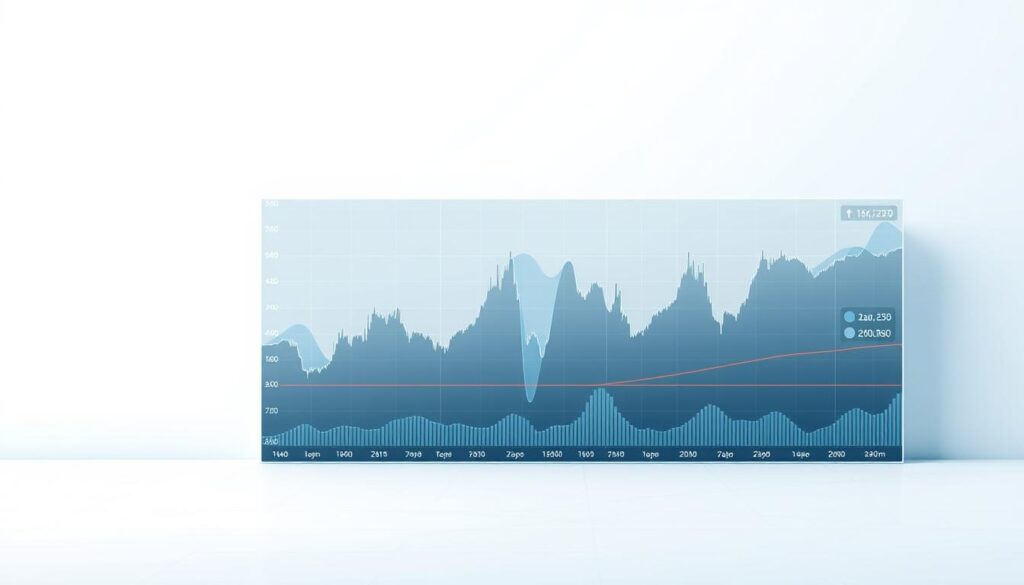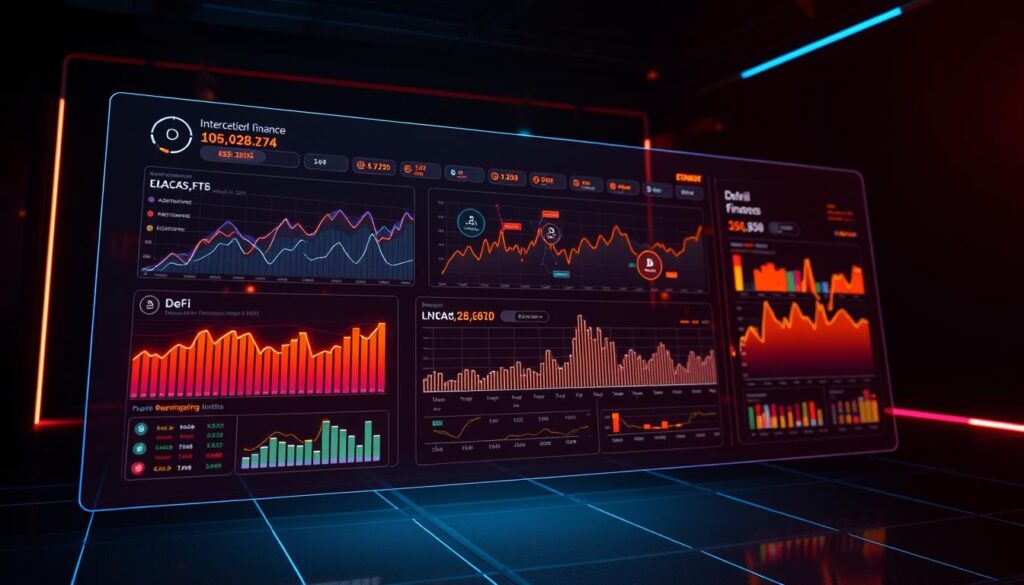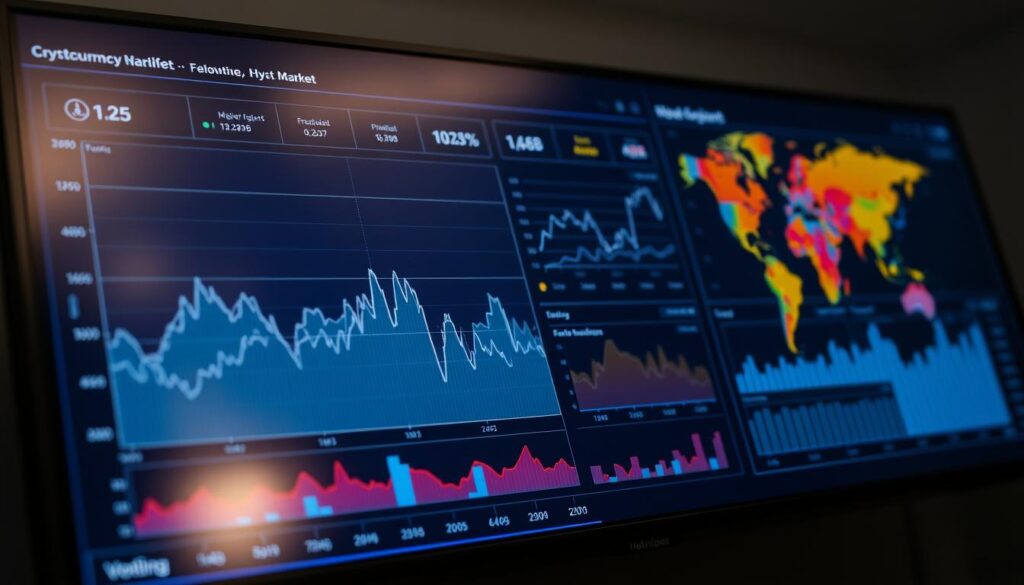Now Reading: Weekly Cryptocurrency Market Analysis and Outlook Guide
- 01
Weekly Cryptocurrency Market Analysis and Outlook Guide
Weekly Cryptocurrency Market Analysis and Outlook Guide

Navigating the complex world of cryptocurrency markets requires strategic insight and comprehensive understanding. This weekly crypto outlook provides investors and traders with a powerful market analysis guide designed to decode the intricate dynamics of digital asset investments.
Cryptocurrency market analysis has become increasingly critical as digital assets continue to evolve and reshape global financial landscapes. Investors need robust tools and knowledge to make informed decisions in this volatile ecosystem.
Our comprehensive guide walks through essential strategies for understanding market trends, interpreting technical indicators, and evaluating potential investment opportunities across various cryptocurrency platforms.
Key Takeaways
- Master fundamental cryptocurrency market analysis techniques
- Understand critical market indicators and trading signals
- Learn how global economic events impact crypto markets
- Develop strategic approaches to risk management
- Gain insights into emerging blockchain technologies
- Recognize patterns in digital asset price movements
Understanding Cryptocurrency Market Dynamics
Navigating the complex world of crypto market dynamics requires a deep understanding of various analytical tools and indicators. Investors and traders rely on sophisticated methods to interpret market movements and make informed decisions in the volatile cryptocurrency landscape.
The cryptocurrency market presents a unique ecosystem where traditional financial principles intersect with cutting-edge digital technologies. Successful navigation demands a comprehensive approach to analyzing market indicators and interpreting complex signals.
Key Market Indicators and Metrics
Effective market analysis involves tracking critical metrics that provide insights into cryptocurrency performance:
- Price momentum
- Trading volume
- Market capitalization
- Relative strength index (RSI)
- Moving averages
Volume Analysis Fundamentals
Volume analysis serves as a crucial component in understanding crypto market dynamics. Trading volume reveals the total number of coins or tokens traded within a specific timeframe, offering valuable insights into market strength and potential price movements.
Key aspects of volume analysis include:
- Identifying market trend confirmation
- Detecting potential trend reversals
- Measuring market participation
- Evaluating liquidity
Market Sentiment Indicators
Sentiment indicators play a pivotal role in crypto market analysis. These tools gauge investor emotions and psychological factors that drive market behavior, helping traders anticipate potential price shifts.
Advanced sentiment analysis techniques leverage social media trends, news sentiment, and community discussions to provide nuanced insights into market expectations and potential cryptocurrency price movements.
Technical Analysis Tools for Crypto Trading
Cryptocurrency traders rely on sophisticated technical analysis tools to navigate the volatile digital asset markets. Crypto technical analysis provides traders with critical insights into potential price movements and market trends. Understanding these trading tools can significantly enhance investment decision-making strategies.
Key chart patterns and technical indicators play a crucial role in cryptocurrency trading. Traders use multiple analysis techniques to develop robust trading strategies that minimize risk and maximize potential returns.
- Candlestick patterns for trend identification
- Moving averages to track price momentum
- Relative Strength Index (RSI) for market sentiment
- Bollinger Bands for volatility assessment
Advanced trading tools help investors interpret complex market signals. Technical indicators transform raw price data into actionable trading insights, enabling more informed decision-making in the cryptocurrency marketplace.
| Technical Indicator | Primary Function | Crypto Trading Application |
|---|---|---|
| MACD | Trend Momentum | Identifying trend reversals |
| RSI | Market Sentiment | Detecting overbought/oversold conditions |
| Fibonacci Retracement | Price Support/Resistance | Predicting potential price corrections |
Successful cryptocurrency traders integrate multiple technical analysis approaches to develop comprehensive trading strategies. By combining different chart patterns and technical indicators, investors can gain a more nuanced understanding of market dynamics.
Major Cryptocurrency Price Movements and Trends
The cryptocurrency market continues to demonstrate dynamic and complex price behaviors that challenge traditional financial analysis. Investors and traders closely monitor cryptocurrency price trends to understand the intricate movements of digital assets across various market segments.
Recent market data reveals significant insights into the current state of digital currency valuations and performance patterns. Bitcoin analysis remains crucial for understanding broader market sentiments and potential directional shifts.
Bitcoin Price Dynamics
Bitcoin’s price trajectory has shown remarkable resilience and volatility. Key observations include:
- Sustained support levels around critical price points
- Increased institutional interest driving price stability
- Technical indicators suggesting potential bullish momentum
Altcoin Market Performance
Altcoin performance continues to demonstrate interesting market correlations with Bitcoin’s price movements. Ethereum, Binance Coin, and Solana have exhibited notable price developments.
| Cryptocurrency | Weekly Change | Market Cap |
|---|---|---|
| Ethereum | +3.5% | $230B |
| Binance Coin | +2.1% | $45B |
| Solana | +4.7% | $22B |
Market Correlation Patterns
Understanding market correlations provides crucial insights for strategic cryptocurrency investments. Interconnected price movements between different digital assets reveal complex market dynamics that go beyond simple linear relationships.
- Negative correlation between Bitcoin and altcoins during volatility
- Emerging patterns of synchronized price movements
- Impact of macroeconomic factors on cryptocurrency valuations
Investors must remain vigilant and adapt to the rapidly evolving cryptocurrency landscape, leveraging comprehensive market analysis and robust risk management strategies.
Weekly Cryptocurrency Market Analysis and Outlook
Conducting a comprehensive weekly crypto analysis requires a strategic approach to understanding market dynamics. Investors and traders must develop a robust framework for evaluating cryptocurrency performance and potential future trends.
Key components of an effective market outlook include:
- Technical price analysis of major cryptocurrencies
- Fundamental market indicators
- Sentiment tracking across multiple platforms
- Historical price pattern recognition
Successful trend forecasting demands a multifaceted approach. Traders should focus on several critical data points to generate accurate price predictions:
- Examine trading volume fluctuations
- Monitor blockchain network activity
- Assess global economic indicators
- Track institutional investment movements
The cryptocurrency market remains highly volatile, requiring investors to remain adaptable. Real-time data analysis and continuous learning are essential for navigating this dynamic financial landscape. Developing a systematic weekly crypto analysis method can help mitigate risks and identify potential investment opportunities.
Professional traders leverage advanced analytical tools and comprehensive market research to generate reliable market outlooks. By combining technical indicators, fundamental analysis, and emerging market trends, investors can create more informed and strategic cryptocurrency investment approaches.
Impact of Global Economic Events on Crypto Markets
Global economic events play a critical role in shaping cryptocurrency market dynamics. Understanding the intricate relationship between economic factors and digital assets helps investors navigate volatile market conditions with greater precision.
Cryptocurrency markets demonstrate remarkable sensitivity to global economic events. Investors must track multiple interconnected factors that drive market sentiment and price fluctuations.
Macroeconomic Factors Driving Crypto Volatility
Several key macroeconomic indicators significantly influence crypto regulations and market sentiment analysis:
- Inflation rates and monetary policy changes
- Geopolitical tensions and international trade dynamics
- Central bank interest rate decisions
- Global economic stability indicators
Regulatory News and Market Responses
Cryptocurrency regulations can trigger immediate and substantial market movements. Regulatory announcements from government agencies often create significant price volatility. Investors closely monitor:
- SEC statements on cryptocurrency classifications
- International regulatory frameworks
- Potential legislative changes affecting digital assets
Market Sentiment Transformation
Economic events can rapidly shift market sentiment, causing investors to reevaluate their cryptocurrency positions. The interconnected nature of global financial systems means that economic events in one region can create ripple effects across digital asset markets worldwide.
Successful crypto investors remain agile, continuously analyzing economic indicators and adapting their strategies to emerging market conditions.
Trading Volume Analysis and Market Depth

Understanding crypto trading volume is crucial for investors navigating the cryptocurrency market. Market depth analysis provides critical insights into potential price movements and liquidity indicators that can guide trading strategies.
Traders rely on several key metrics to assess market dynamics:
- Trading volume as a trend confirmation signal
- Order book depth and liquidity levels
- Support and resistance identification
- Potential price reversal patterns
Liquidity indicators help traders understand the market’s ability to absorb large trades without significant price disruptions. Low liquidity can lead to increased volatility, making it essential to analyze market depth before executing trades.
Cryptocurrency markets often experience rapid volume fluctuations. Professional traders use advanced tools to track:
- Real-time trading volume across exchanges
- Bid-ask spread analysis
- Order book depth charts
- Volume-weighted average price (VWAP)
Smaller cryptocurrencies typically demonstrate more dramatic volume shifts compared to established coins like Bitcoin. Investors should carefully evaluate liquidity indicators to manage potential risks and optimize trading decisions.
Institutional Investment Flows in Cryptocurrency
The cryptocurrency landscape is experiencing a transformative shift as institutional crypto investment gains unprecedented momentum. Large corporations and investment funds are increasingly recognizing digital assets as a legitimate financial instrument, driving substantial capital into the market.
Institutional investors are bringing significant credibility and stability to cryptocurrency markets. Their strategic approach to corporate Bitcoin holdings demonstrates a growing acceptance of digital assets as a viable investment class.
Corporate Treasury Holdings
Key developments in corporate Bitcoin holdings include:
- Increased allocation of treasury reserves into Bitcoin
- Strategic diversification of corporate financial assets
- Risk management through cryptocurrency investments
Investment Fund Allocations
Crypto investment funds are expanding their digital asset portfolios through:
- Dedicated cryptocurrency mutual funds
- Exchange-traded cryptocurrency investment products
- Managed blockchain technology investment strategies
The institutional investment trend signals a significant maturation of the cryptocurrency ecosystem, bridging traditional finance with digital innovation.
DeFi Market Performance and Metrics

Decentralized finance (DeFi) continues to reshape the cryptocurrency landscape with dynamic market performance and innovative financial metrics. The DeFi market analysis reveals significant growth and evolving opportunities for investors and blockchain enthusiasts.
Key decentralized finance metrics demonstrate the sector’s robust development:
- Total Value Locked (TVL) tracking ecosystem health
- Yield farming returns and liquidity pool performances
- DeFi token performance across multiple platforms
Investors tracking DeFi token performance can leverage several critical indicators to make informed decisions. Liquidity protocols and decentralized exchange volumes provide crucial insights into market trends and user engagement.
Recent developments in DeFi markets showcase interesting trends:
- Increased institutional interest in decentralized platforms
- Advanced smart contract capabilities
- Enhanced security protocols for financial transactions
The DeFi market analysis suggests a maturing ecosystem with expanding use cases beyond traditional financial services. Strategic investors are closely monitoring decentralized finance metrics to identify emerging opportunities and potential growth sectors.
Innovative platforms continue to drive DeFi token performance, creating new pathways for financial interaction and investment strategies in the blockchain ecosystem.
Network Health and Blockchain Analytics
Cryptocurrency investors and analysts rely on blockchain analytics to understand the intricate dynamics of digital asset networks. These advanced analytical tools provide critical insights into network performance, security, and overall ecosystem health.
Blockchain analytics serve as a powerful lens for evaluating cryptocurrency networks. By examining key network health indicators, investors can make more informed decisions about potential investments and market trends.
Hash Rate Analysis: Measuring Network Strength
Hash rate trends reveal crucial information about a blockchain’s security and mining activity. A robust hash rate typically indicates:
- Strong network security
- High miner confidence
- Increased computational power
- Potential price stability
Network Activity Indicators
Comprehensive network activity indicators help investors understand user engagement and blockchain performance. These metrics include:
- Active wallet addresses
- Transaction volume
- Network congestion levels
- Average transaction fees
By tracking these network health indicators, cryptocurrency enthusiasts can gain deeper insights into the underlying strength and potential of blockchain ecosystems.
Market Volatility and Risk Assessment

Crypto market volatility remains a critical challenge for investors and traders navigating the digital asset landscape. Understanding volatility indicators is crucial for developing robust risk management strategies that protect investment portfolios from unexpected market shifts.
Investors can leverage several key approaches to manage crypto market volatility:
- Implement dynamic position sizing techniques
- Utilize stop-loss orders strategically
- Diversify across multiple cryptocurrency assets
- Monitor real-time market sentiment indicators
Advanced volatility analysis involves tracking multiple metrics that provide insights into potential market movements. Crypto traders must develop a comprehensive risk assessment framework that goes beyond simple price observations.
| Volatility Indicator | Risk Assessment Value | Interpretation |
|---|---|---|
| Average True Range (ATR) | High | Measures price fluctuations |
| Relative Volatility Index | Medium | Compares current volatility to historical trends |
| Standard Deviation | Low | Evaluates price dispersion |
Successful cryptocurrency investors recognize that risk management is not about eliminating volatility but understanding and strategically navigating market dynamics. By developing a nuanced approach to volatility indicators, traders can transform market uncertainty into potential opportunities.
Cross-Chain Analysis and Layer 2 Solutions
The cryptocurrency ecosystem continues to evolve, with blockchain interoperability becoming a critical focus for developers and investors. Cross-chain analysis provides deep insights into the complex interactions between different blockchain networks, revealing intricate patterns of digital asset movement and technological advancement.
Layer 2 solutions have emerged as a transformative approach to addressing blockchain scalability challenges. These innovative technologies create additional transaction frameworks that operate on top of existing blockchain networks, dramatically improving processing speed and reducing transaction costs.
Scaling Solution Metrics
Evaluating Layer 2 solutions requires careful examination of key performance indicators:
- Transaction throughput
- Confirmation times
- Total value locked (TVL)
- Network fees
- User adoption rates
Inter-Blockchain Activity
The landscape of cross-chain analysis reveals fascinating trends in blockchain interoperability. Researchers and investors track multiple metrics to understand complex network interactions:
- Volume of cross-chain transactions
- Wrapped asset transfers
- Bridge utilization rates
- Network security protocols
These sophisticated analytical approaches help stakeholders make informed decisions in an increasingly interconnected digital asset ecosystem. Understanding cross-chain dynamics provides a competitive edge in navigating the rapidly evolving blockchain landscape.
NFT Market Trends and Analysis

The non-fungible token (NFT) market continues to evolve as a dynamic segment within the cryptocurrency ecosystem. Digital art market participants are witnessing significant transformations in how unique digital assets are created, traded, and valued.
Key insights from recent NFT market analysis reveal several critical trends:
- Increased interest from institutional collectors
- Expanding utility beyond digital artwork
- Growing integration with blockchain gaming platforms
NFT market analysis demonstrates substantial volatility in sales volumes and pricing structures. Emerging platforms are creating more accessible entry points for new collectors and artists.
| NFT Category | Market Share | Average Price |
|---|---|---|
| Digital Art | 42% | $2,350 |
| Collectibles | 28% | $1,750 |
| Gaming Assets | 18% | $1,200 |
Non-fungible token trends indicate a maturation of the market, with sophisticated investors seeking verifiable digital ownership and unique blockchain-based assets. Sophisticated collectors are prioritizing provenance and long-term value potential.
- Blockchain verification adds credibility
- Smart contract innovations enhance asset management
- Cross-platform compatibility increases
Investors tracking the digital art market should carefully evaluate platform reputation, artist credentials, and underlying technological infrastructure when making investment decisions.
Mining Profitability and Network Security
Cryptocurrency mining represents a complex ecosystem where network security and financial incentives intersect. Understanding crypto mining profitability requires deep analysis of multiple interconnected factors that influence miners’ economic decisions and blockchain network stability.
The landscape of network security analysis has evolved dramatically in recent years, with miners constantly adapting to changing market conditions. Key elements determining mining success include:
- Hardware efficiency
- Electricity costs
- Current cryptocurrency prices
- Network difficulty levels
Mining Difficulty Trends
Mining difficulty trends directly impact cryptocurrency networks’ resilience and miners’ potential earnings. As computational power increases, networks automatically adjust mining complexity to maintain consistent block generation rates.
| Network | Current Difficulty | Monthly Change | Profitability Index |
|---|---|---|---|
| Bitcoin | 45.2 trillion | +3.5% | 0.78 |
| Ethereum | 32.6 quadrillion | +2.1% | 0.65 |
Energy Market Impact
Energy consumption remains a critical consideration in crypto mining profitability. Miners must carefully evaluate electricity rates and renewable energy opportunities to maintain competitive margins. Strategic energy procurement can significantly enhance overall mining economics.
Successful miners leverage sophisticated network security analysis techniques to optimize their operations, balancing technological investments with potential returns in an increasingly competitive digital landscape.
Regulatory Environment Updates
The crypto regulations landscape continues to evolve rapidly, presenting both challenges and opportunities for investors and blockchain projects. Regulatory impacts on markets have become increasingly significant, driving changes in compliance trends across the global financial ecosystem.
Key developments in crypto regulations are reshaping the digital asset environment. Governments worldwide are developing more sophisticated approaches to cryptocurrency oversight, creating a complex regulatory framework that demands close attention.
- United States regulatory agencies intensify crypto market scrutiny
- European Union advances comprehensive cryptocurrency legislation
- Asian markets implement stricter compliance requirements
Investors must stay informed about emerging regulatory trends that could significantly impact market dynamics. Compliance trends are becoming more nuanced, requiring sophisticated understanding of legal frameworks.
| Jurisdiction | Regulatory Focus | Current Status |
|---|---|---|
| United States | SEC Cryptocurrency Oversight | Increased Enforcement |
| European Union | MiCA Regulation Implementation | Comprehensive Framework |
| Singapore | Blockchain Innovation Support | Proactive Regulatory Approach |
Understanding the regulatory environment requires continuous monitoring of global developments. Cryptocurrency projects must adapt quickly to changing compliance requirements, balancing innovation with legal adherence.
Future Market Projections and Scenarios
Navigating the cryptocurrency market requires strategic insight into potential future scenarios. Effective crypto market projections demand a comprehensive approach that integrates technical analysis, market sentiment, and emerging technological trends. Investors must develop adaptive strategies that can withstand the dynamic nature of digital asset markets.
Long-term outlook indicators suggest significant potential for cryptocurrency markets, driven by increasing institutional adoption and technological innovation. Advanced blockchain networks and decentralized finance platforms are reshaping investment paradigms. Traders and analysts must continuously reassess their models, considering geopolitical shifts, regulatory developments, and technological breakthroughs that could dramatically impact market dynamics.
Risk management becomes paramount when developing future scenarios for cryptocurrency investments. Sophisticated investors leverage multiple analytical tools to create robust predictive models that account for market volatility. By understanding potential market trajectories and maintaining flexible investment strategies, market participants can better position themselves to capitalize on emerging opportunities while mitigating potential downside risks.
The most successful cryptocurrency investors will be those who combine data-driven analysis with forward-thinking scenario planning. By integrating technical indicators, network health metrics, and broader economic trends, traders can develop nuanced perspectives on potential market movements. Continuous learning and adaptability remain critical in this rapidly evolving digital asset landscape.
FAQ
What are the key market indicators for cryptocurrency analysis?
Key market indicators include trading volume, price movements, market capitalization, relative strength index (RSI), and moving averages. These metrics help traders understand market trends, potential price reversals, and overall market sentiment in the cryptocurrency ecosystem.
How do global economic events impact cryptocurrency markets?
Global economic events such as inflation rates, interest rate changes, geopolitical tensions, and regulatory announcements can significantly influence cryptocurrency prices. These factors affect investor sentiment, institutional investment flows, and overall market dynamics, causing potential price volatility and market shifts.
What is the importance of trading volume in crypto analysis?
Trading volume is crucial as it confirms price trends, indicates market strength, and provides insights into market liquidity and investor interest. High trading volumes can signal potential trend continuations or reversals, making it an essential metric for comprehensive cryptocurrency market analysis.
How do institutional investments affect cryptocurrency markets?
Institutional investments bring legitimacy, increased liquidity, and market stability to cryptocurrencies. Corporate treasury holdings, investment fund allocations, and large-scale investments from traditional financial institutions can significantly impact cryptocurrency prices and market sentiment.
What are DeFi metrics to consider in market analysis?
Key DeFi metrics include Total Value Locked (TVL), yield farming opportunities, liquidity pool performance, and decentralized exchange volumes. These indicators help analysts understand the health and growth of the decentralized finance ecosystem and its potential impact on broader cryptocurrency markets.
How can blockchain network health impact cryptocurrency prices?
Network health indicators such as hash rate, active addresses, transaction volumes, and network fees provide insights into blockchain performance and user adoption. These metrics can influence investor confidence and potentially impact cryptocurrency valuations.
What role do NFTs play in cryptocurrency market analysis?
Non-Fungible Tokens (NFTs) have become an important market segment, with metrics like sales volume, floor prices, and project launches offering insights into market trends. NFT market activity can influence related cryptocurrencies and provide additional context for comprehensive market analysis.
How do regulatory changes affect cryptocurrency markets?
Regulatory announcements can cause significant market volatility and sentiment shifts. Changes in legal frameworks, compliance requirements, and government stance on cryptocurrencies can impact investor confidence, institutional participation, and overall market dynamics.
What is cross-chain analysis in cryptocurrency markets?
Cross-chain analysis involves examining inter-blockchain transactions, scaling solutions, and asset transfers between different blockchain networks. This approach helps analysts understand technological innovations, network interoperability, and potential market developments across various cryptocurrency ecosystems.
How can investors manage risk in volatile cryptocurrency markets?
Risk management strategies include portfolio diversification, position sizing, setting stop-loss orders, using volatility indicators, and maintaining a long-term perspective. Continuously updating market analysis and remaining adaptable are crucial for navigating the dynamic cryptocurrency landscape.














